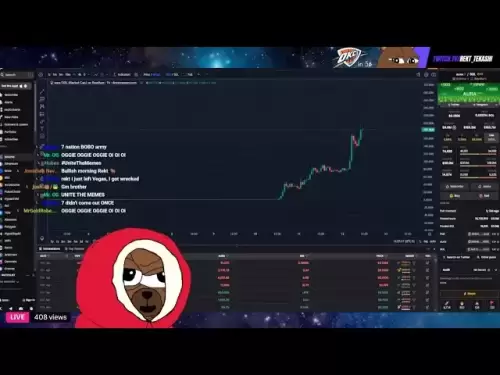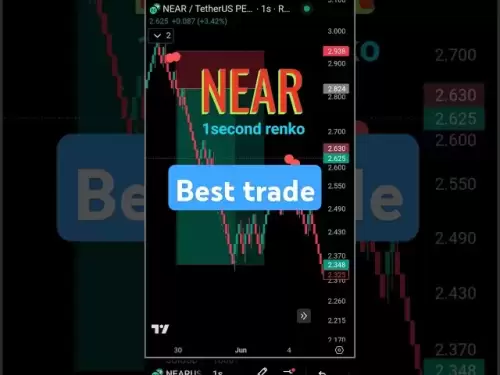-
 Bitcoin
Bitcoin $104,752.8401
-2.58% -
 Ethereum
Ethereum $2,516.3322
-8.57% -
 Tether USDt
Tether USDt $1.0005
0.04% -
 XRP
XRP $2.1340
-4.95% -
 BNB
BNB $655.1401
-2.01% -
 Solana
Solana $144.6836
-9.35% -
 USDC
USDC $0.9999
0.02% -
 Dogecoin
Dogecoin $0.1745
-7.91% -
 TRON
TRON $0.2737
-0.33% -
 Cardano
Cardano $0.6338
-7.60% -
 Hyperliquid
Hyperliquid $40.1026
-3.36% -
 Sui
Sui $3.0141
-9.04% -
 Chainlink
Chainlink $13.2223
-8.47% -
 UNUS SED LEO
UNUS SED LEO $9.0676
2.21% -
 Bitcoin Cash
Bitcoin Cash $415.0292
-2.74% -
 Avalanche
Avalanche $19.1606
-8.88% -
 Stellar
Stellar $0.2583
-6.53% -
 Toncoin
Toncoin $2.9719
-7.89% -
 Shiba Inu
Shiba Inu $0.0...01170
-8.35% -
 Hedera
Hedera $0.1541
-8.82% -
 Litecoin
Litecoin $83.6477
-6.58% -
 Polkadot
Polkadot $3.8150
-6.48% -
 Ethena USDe
Ethena USDe $1.0004
-0.03% -
 Monero
Monero $314.3976
-3.68% -
 Dai
Dai $1.0000
0.02% -
 Bitget Token
Bitget Token $4.5415
-4.05% -
 Uniswap
Uniswap $7.3141
-7.93% -
 Pepe
Pepe $0.0...01072
-13.13% -
 Aave
Aave $286.9058
-2.59% -
 Pi
Pi $0.5528
-12.36%
What does the high volume stagnation mean? Is the main force shipping?
High volume stagnation in crypto means high trading but stable prices; it may indicate main force shipping, balanced by equal buying.
Jun 10, 2025 at 11:01 pm
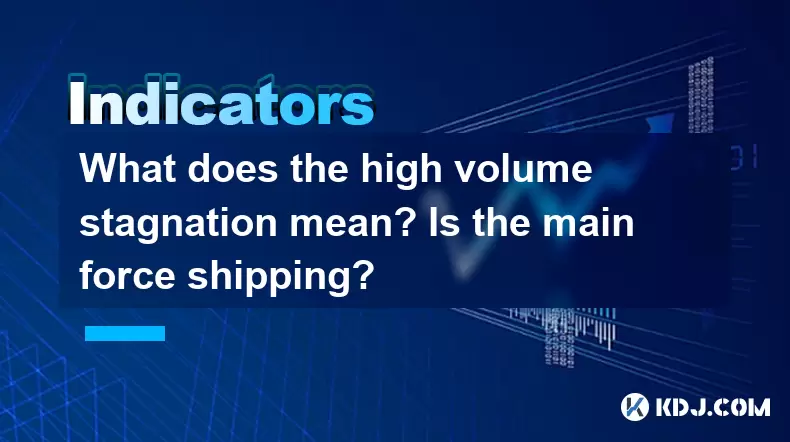
What does the high volume stagnation mean? Is the main force shipping?
In the world of cryptocurrencies, understanding market dynamics is crucial for making informed trading decisions. One phenomenon that traders often encounter is high volume stagnation. This article delves into what high volume stagnation means, whether it indicates that the main force is shipping, and how traders can interpret and react to these market conditions.
Understanding High Volume Stagnation
High volume stagnation refers to a situation in the cryptocurrency market where trading volumes are significantly high, but the price of the asset remains relatively unchanged. This can be a perplexing scenario for traders because high trading volumes typically suggest strong interest and activity in the market, which should ideally lead to price movements.
When the market experiences high volume stagnation, it indicates that there is a lot of buying and selling happening, but the forces of supply and demand are balancing each other out. This balance prevents the price from moving significantly in either direction. Traders need to understand that this phenomenon can be influenced by various factors, including market sentiment, liquidity, and the actions of large investors or "main forces."
Is the Main Force Shipping?
The term "main force" in the context of cryptocurrency trading often refers to large institutional investors or whales who have the capacity to influence market prices through their trading activities. The question of whether the main force is shipping during periods of high volume stagnation is a common concern among traders.
Shipping in trading terminology means that large investors are selling their holdings, often in large volumes, which can lead to a decrease in the asset's price. During high volume stagnation, it is possible that the main force is indeed shipping, but the impact of their selling is being offset by an equal amount of buying from other market participants.
To determine if the main force is shipping, traders can look at several indicators:
- Order Book Depth: Analyzing the order book can reveal whether there are large sell orders that could indicate shipping by the main force.
- Volume Profile: A volume profile can show where the majority of trading volume is occurring, which might indicate whether large investors are selling at certain price levels.
- On-Chain Data: Examining on-chain metrics such as large transaction volumes can provide insights into the activities of major investors.
Interpreting High Volume Stagnation
Interpreting high volume stagnation requires a nuanced understanding of market dynamics. It is important for traders to look beyond the surface-level data and consider various factors that could be contributing to the observed market conditions.
- Market Sentiment: High volume stagnation can be influenced by the overall sentiment of the market. If investors are uncertain about the future direction of the asset, they might engage in high volumes of trading without a clear consensus on price movement.
- Liquidity: High liquidity can lead to high volume stagnation if there is a large number of market participants trading small amounts, which balances out the overall price movement.
- Market Manipulation: In some cases, high volume stagnation could be a result of market manipulation by large investors who are trying to create a false sense of stability to execute their trading strategies.
Trading Strategies During High Volume Stagnation
When faced with high volume stagnation, traders need to adapt their strategies to navigate the market effectively. Here are some approaches that traders can consider:
- Range Trading: Since the price is not moving significantly, traders can engage in range trading by buying at the lower end of the range and selling at the higher end.
- Breakout Trading: Traders can prepare for potential breakouts by setting up buy or sell orders at key resistance or support levels. A breakout from the stagnation could lead to significant price movements.
- Scalping: Given the high volume, traders can engage in scalping, which involves making small profits from numerous trades throughout the day.
Technical Analysis Tools for High Volume Stagnation
Utilizing technical analysis tools can help traders gain a better understanding of high volume stagnation and make more informed trading decisions. Here are some tools that traders can use:
- Volume Indicators: Tools like the Volume Weighted Average Price (VWAP) and the On-Balance Volume (OBV) can provide insights into the relationship between volume and price movements.
- Moving Averages: Using moving averages can help traders identify trends and potential breakouts from the stagnation period.
- Candlestick Patterns: Analyzing candlestick patterns can reveal potential shifts in market sentiment and help traders anticipate price movements.
Practical Steps to Analyze High Volume Stagnation
To effectively analyze high volume stagnation, traders can follow these practical steps:
- Monitor Trading Volumes: Keep a close eye on the trading volumes of the asset in question. High volumes can indicate significant market activity, even if the price is not moving.
- Analyze Order Books: Regularly review the order book to understand the depth of buy and sell orders. This can provide clues about the intentions of large investors.
- Use On-Chain Analytics: Leverage on-chain analytics tools to track large transactions and movements of funds, which can indicate whether the main force is shipping or not.
- Set Up Alerts: Configure price and volume alerts to stay informed about potential breakouts or shifts in market conditions.
- Backtest Strategies: Use historical data to backtest trading strategies that can be effective during periods of high volume stagnation.
Frequently Asked Questions
1. Can high volume stagnation last for a long time?
High volume stagnation can persist for varying durations depending on the underlying market conditions. It can last for days, weeks, or even months if the forces of supply and demand remain balanced.
2. How can I differentiate between high volume stagnation and a consolidation phase?
High volume stagnation typically involves high trading volumes with little price movement, while consolidation phases can occur with varying volumes. Consolidation often precedes a significant price move, whereas high volume stagnation may continue without a clear breakout.
3. Are there specific cryptocurrencies more prone to high volume stagnation?
While high volume stagnation can occur in any cryptocurrency, it is more commonly observed in highly liquid assets with significant institutional interest, such as Bitcoin and Ethereum.
4. What role does market manipulation play in high volume stagnation?
Market manipulation can contribute to high volume stagnation by creating artificial stability in the market. Large investors may engage in high-volume trading to mask their true intentions and execute their strategies without causing immediate price movements.
Disclaimer:info@kdj.com
The information provided is not trading advice. kdj.com does not assume any responsibility for any investments made based on the information provided in this article. Cryptocurrencies are highly volatile and it is highly recommended that you invest with caution after thorough research!
If you believe that the content used on this website infringes your copyright, please contact us immediately (info@kdj.com) and we will delete it promptly.
- Stock market update: Mining stocks down as market falls
- 2025-06-13 18:20:11
- title: What is Little Pepe Coin?
- 2025-06-13 18:20:11
- The interest in the cryptocurrency market is renewed due to the Ethereum ETF developments, as institutional money enters the digital assets market
- 2025-06-13 18:15:11
- GIZA (GIZA) Price Prediction 2025-2030, Is GIZA a Good Investment Option?
- 2025-06-13 18:15:11
- Bitcoin Solaris (BTC-S) Emerges as the Technological Revolution Revolutionizing the Crypto Landscape
- 2025-06-13 18:10:12
- Bank of America's stablecoin ambitions are an important shift in how major banks are approaching digital assets.
- 2025-06-13 18:10:12
Related knowledge
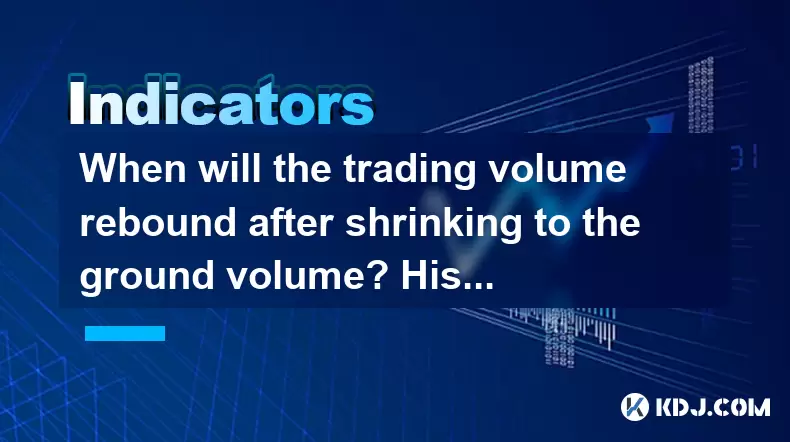
When will the trading volume rebound after shrinking to the ground volume? Historical percentile comparison method
Jun 13,2025 at 03:36pm
Understanding the Ground Volume Concept in Cryptocurrency MarketsIn cryptocurrency trading, 'ground volume' refers to a period when the trading volume of a particular asset or market drops significantly, often reaching multi-month or even multi-year lows. This phenomenon typically signals a lack of interest from traders and investors, suggesting that th...
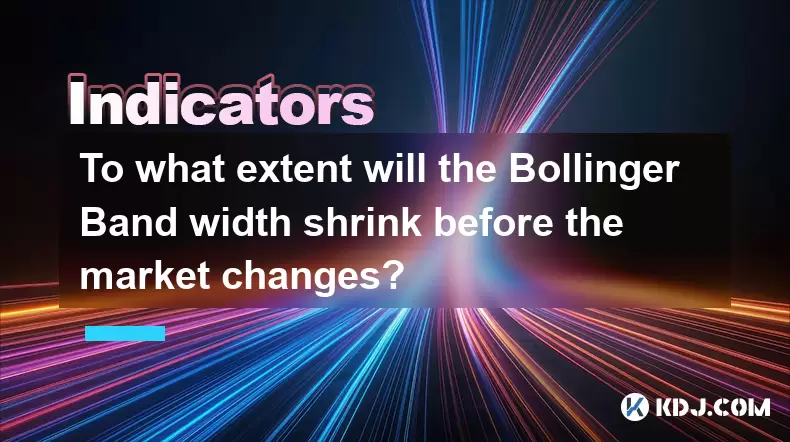
To what extent will the Bollinger Band width shrink before the market changes?
Jun 13,2025 at 06:35pm
Understanding the Bollinger Band Width and Its SignificanceThe Bollinger Band width is a critical technical analysis tool used in cryptocurrency trading to measure market volatility. It consists of three lines: a simple moving average (SMA), an upper band, and a lower band. The distance between the upper and lower bands reflects the level of volatility ...
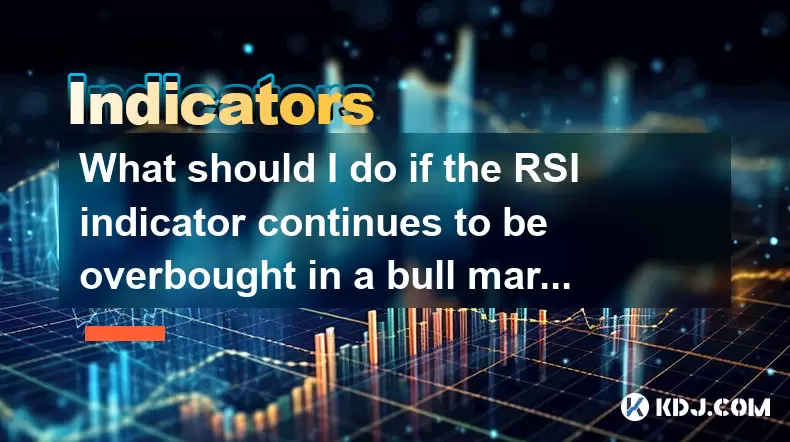
What should I do if the RSI indicator continues to be overbought in a bull market? How to adjust the overbought zone threshold?
Jun 13,2025 at 05:57pm
Understanding the RSI Indicator in a Bull MarketThe Relative Strength Index (RSI) is a momentum oscillator commonly used by traders to assess overbought or oversold conditions of an asset. In a bull market, especially within the cryptocurrency space, prices can remain elevated for extended periods. This often leads to the RSI indicator staying in the ov...

How to read the CR indicator's four lines that diverge and then converge? Key pressure point identification skills
Jun 13,2025 at 12:21pm
Understanding the CR Indicator in Cryptocurrency TradingThe CR indicator, also known as the Chikin Ratio or Chaikin Oscillator, is a technical analysis tool widely used in cryptocurrency trading to gauge momentum and potential price reversals. It combines volume and price data to provide traders with insights into market strength and weakness. The indic...
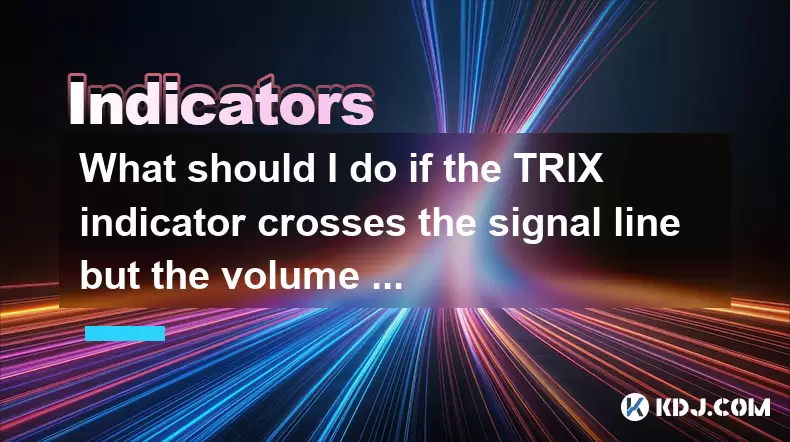
What should I do if the TRIX indicator crosses the signal line but the volume is insufficient?
Jun 13,2025 at 05:49pm
Understanding the TRIX Indicator and Its Role in Cryptocurrency TradingThe TRIX (Triple Exponential Average) indicator is a momentum oscillator commonly used by cryptocurrency traders to identify potential trend reversals or confirm existing trends. It filters out market noise by applying triple exponential smoothing to price data, which makes it partic...

What should I do if the ASI vibration rise and fall indicator is not synchronized with the price? When should I believe in the indicator?
Jun 13,2025 at 12:29pm
Understanding the ASI Vibration Rise and Fall IndicatorThe Accumulation Swing Index (ASI) is a technical indicator developed by Welles Wilder to help traders identify potential reversals and confirm trends in price movements. The vibration rise and fall aspect of the ASI refers to how the line oscillates above and below its zero line, indicating shifts ...

When will the trading volume rebound after shrinking to the ground volume? Historical percentile comparison method
Jun 13,2025 at 03:36pm
Understanding the Ground Volume Concept in Cryptocurrency MarketsIn cryptocurrency trading, 'ground volume' refers to a period when the trading volume of a particular asset or market drops significantly, often reaching multi-month or even multi-year lows. This phenomenon typically signals a lack of interest from traders and investors, suggesting that th...

To what extent will the Bollinger Band width shrink before the market changes?
Jun 13,2025 at 06:35pm
Understanding the Bollinger Band Width and Its SignificanceThe Bollinger Band width is a critical technical analysis tool used in cryptocurrency trading to measure market volatility. It consists of three lines: a simple moving average (SMA), an upper band, and a lower band. The distance between the upper and lower bands reflects the level of volatility ...

What should I do if the RSI indicator continues to be overbought in a bull market? How to adjust the overbought zone threshold?
Jun 13,2025 at 05:57pm
Understanding the RSI Indicator in a Bull MarketThe Relative Strength Index (RSI) is a momentum oscillator commonly used by traders to assess overbought or oversold conditions of an asset. In a bull market, especially within the cryptocurrency space, prices can remain elevated for extended periods. This often leads to the RSI indicator staying in the ov...

How to read the CR indicator's four lines that diverge and then converge? Key pressure point identification skills
Jun 13,2025 at 12:21pm
Understanding the CR Indicator in Cryptocurrency TradingThe CR indicator, also known as the Chikin Ratio or Chaikin Oscillator, is a technical analysis tool widely used in cryptocurrency trading to gauge momentum and potential price reversals. It combines volume and price data to provide traders with insights into market strength and weakness. The indic...

What should I do if the TRIX indicator crosses the signal line but the volume is insufficient?
Jun 13,2025 at 05:49pm
Understanding the TRIX Indicator and Its Role in Cryptocurrency TradingThe TRIX (Triple Exponential Average) indicator is a momentum oscillator commonly used by cryptocurrency traders to identify potential trend reversals or confirm existing trends. It filters out market noise by applying triple exponential smoothing to price data, which makes it partic...

What should I do if the ASI vibration rise and fall indicator is not synchronized with the price? When should I believe in the indicator?
Jun 13,2025 at 12:29pm
Understanding the ASI Vibration Rise and Fall IndicatorThe Accumulation Swing Index (ASI) is a technical indicator developed by Welles Wilder to help traders identify potential reversals and confirm trends in price movements. The vibration rise and fall aspect of the ASI refers to how the line oscillates above and below its zero line, indicating shifts ...
See all articles





















